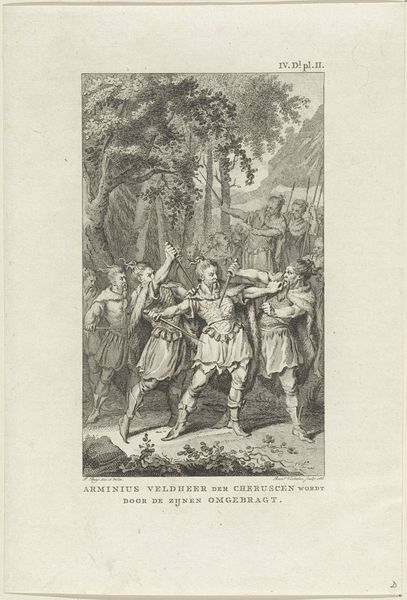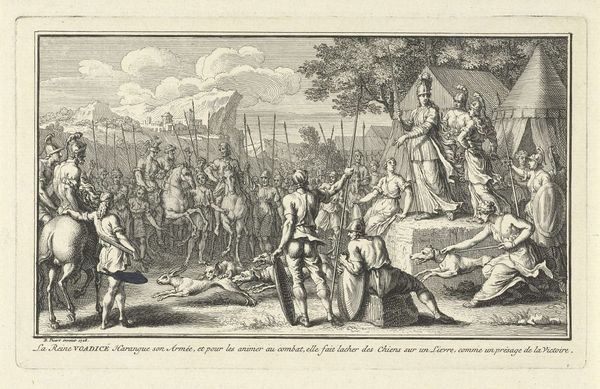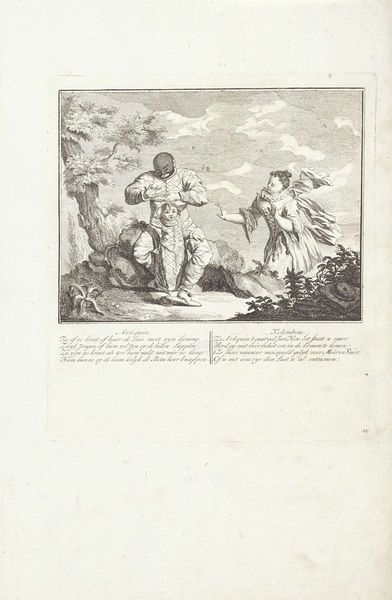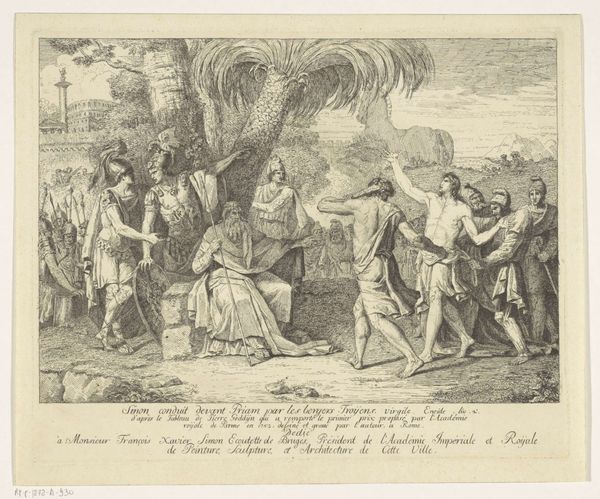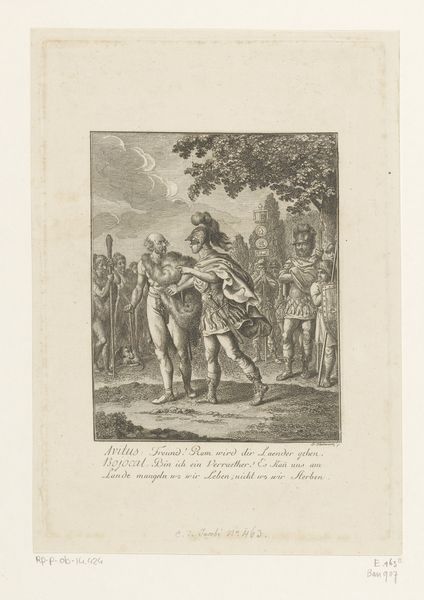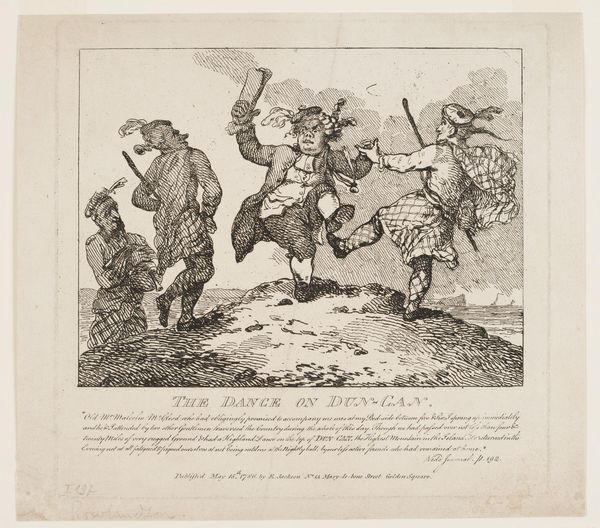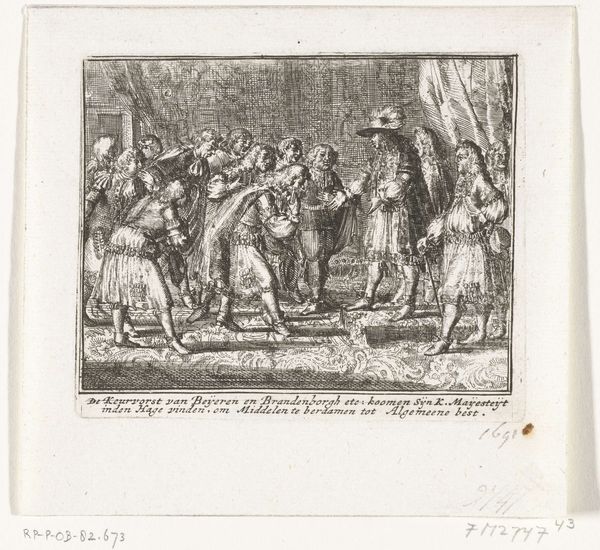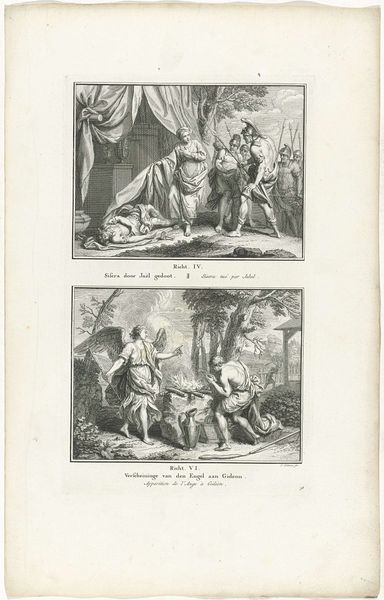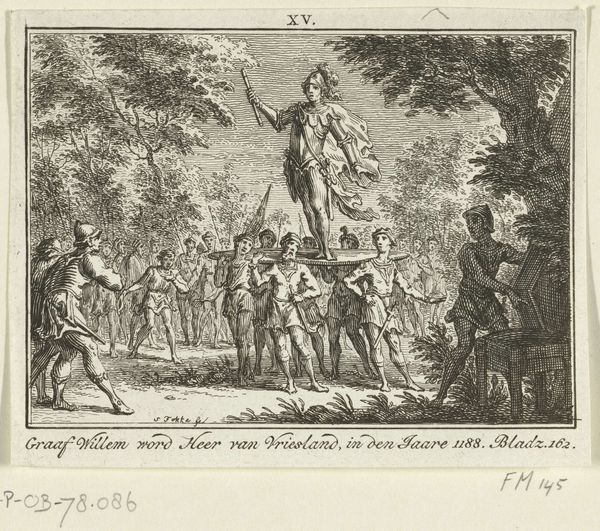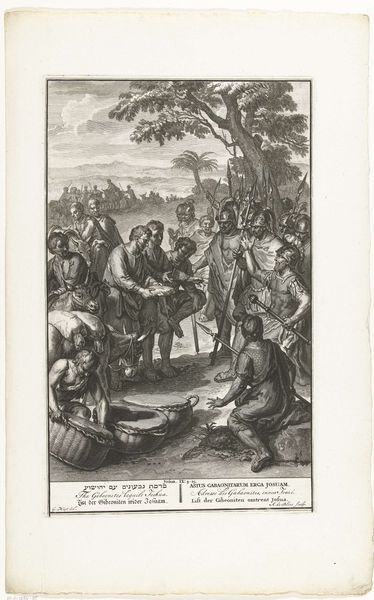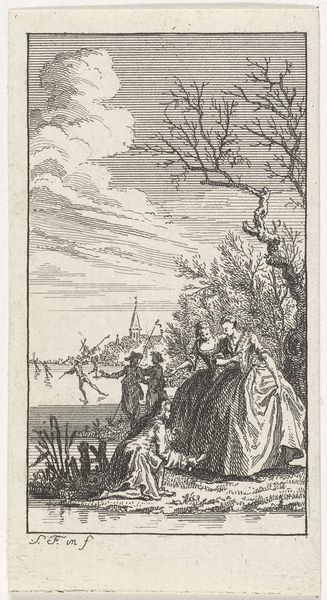
print, engraving
#
neoclacissism
# print
#
pen sketch
#
caricature
#
history-painting
#
engraving
Dimensions: height 282 mm, width 204 mm
Copyright: Rijks Museum: Open Domain
Curator: This engaging engraving from 1784, titled "Spotprent op Kaat Mossel, Adriaan Trago en Petrus Hofstede," resides at the Rijksmuseum. It seems to depict a scene ripe with satire. My first impression is of a topsy-turvy world; everything feels slightly off-kilter. What strikes you? Editor: The chaotic composition really hits you right away. There is a sense of rebellion, even unrest, but cloaked in jest. It's visually busy, almost frantic, yet all the figures are rendered with this careful detail. Curator: Absolutely. As a political print from that era, the Dutch Neoclassical style serves the caricature well; note how these classical forms are subverted to mock prominent figures. Kat Mossel, for example, was a leader of the Patriot faction, which challenged the ruling House of Orange. The print critiques that political movement. Editor: Precisely, and understanding Kaat Mossel is key to understanding this artwork's broader commentary on class, gender, and power during this tumultuous period. The exaggerated features, especially in conjunction with a donkey and jester's hat, satirizes a perceived lack of intelligence and legitimacy, particularly from a woman daring to engage in politics. Curator: The artist, anonymous as they may be, cleverly uses these visual cues to convey their political stance. The symbols like the donkey and the text beneath clearly show the political motivations for creating it. It provides a rich document of a society on the verge of revolution. Editor: Beyond simply representing the past, images such as these act as reminders that visual art plays an active role in social dialogue. They underscore art's continuing influence, either legitimizing power structures or prompting conversations around inequity and discrimination. Curator: It is amazing to witness these complex dynamics through such works from our collections and discuss the intersectionality of factors like class, race, gender, identity, or philosophical stances that often become entwined with politics. Editor: Right, making sense of historical symbolism enables viewers to actively apply the artwork's ideas within the world around them today.
Comments
No comments
Be the first to comment and join the conversation on the ultimate creative platform.
